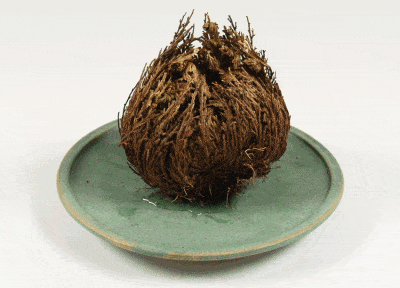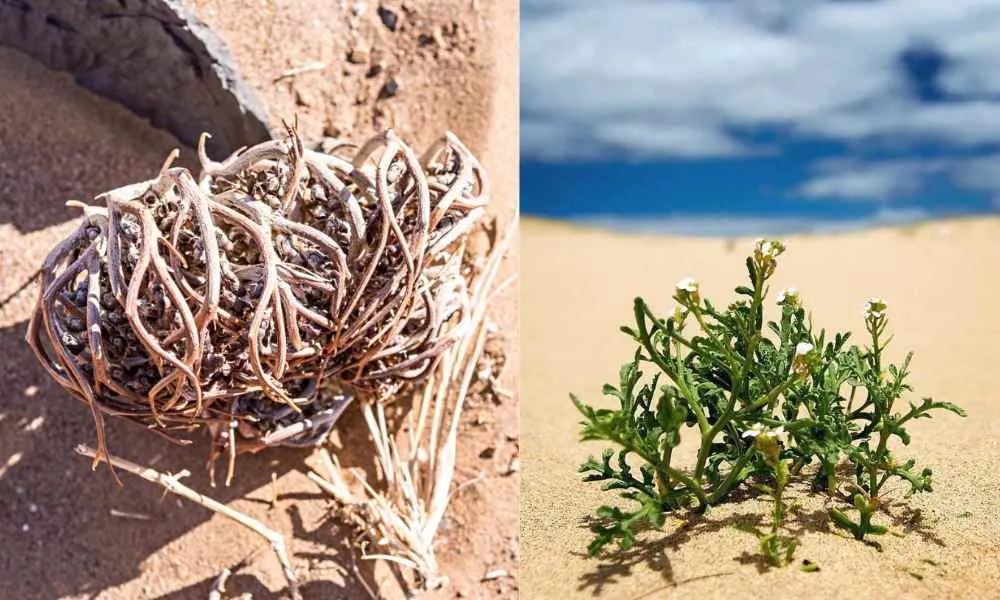Miraculous Resurrection Plant That Comes Back To Life!
In the world of botany, there are a few fascinating things as the ‘resurrection plant.’ These unique plants can come back to life after surviving extreme dehydration and can last long without water. When rehydrated, they undergo an incredible transformation. It unfolds from a lifeless form into a vibrant green organism.
The resurrection plant, specifically species like Selaginella lepidophylla, displays the remarkable phenomenon of desiccation tolerance. This ability allows the plant to bear dry conditions that would be deadly to most flora. When exposed to moisture, it revives and resumes normal growth and photosynthesis. This trait is a survival mechanism, an adaptation to environments where water is not always readily available. Let’s dive in to know more about this mysterious plant.
What is the Resurrection Plant?
The Resurrection Plant, scientifically known as Selaginella lepidophylla, is commonly found in desert environments. This plant has adapted an incredible survival mechanism to endure harsh, arid conditions. It exhibits a unique ability to revive itself from a lifeless state upon rehydration.
When water is insufficient, the Resurrection Plant’s foliage curls inward, forming a tight, ball-like structure that conserves moisture. This dormant state can last for months, or even years. When exposed to water, it unfurls. The plant returns to a lush, green appearance remarkably quickly.
The Resurrection Plant spans across the arid regions of Mexico and the southern United States. Its global distribution, however, extends through its popularity as a houseplant. It is valued for both its unique structure and minimal care requirements.
It is characterized by scaly leaves and a crown-like appearance when hydrated. Its common name, “Rose of Jericho,” hints at its seemingly miraculous transformation. This change is a fine spectacle in the plant kingdom.

How Long Can a Resurrection Plant Live?
The resurrection plant has an incredible ability to survive in a dormant state for extended periods. It is only to be resurrected with some water. Remarkably, certain species have been observed to live for centuries, such as the Ramonda myconi. It is an extraordinary survivor who stays up to 250 years and recovers from both dehydration and freezing.
The longevity of the plant is greatly affected by various environmental conditions. They go through cycles of dormancy and revival repeatedly, which can occur over many years. This is mainly depending on the availability of moisture and the temperatures they endure.
Types of Resurrection Plants
Despite the name of the resurrection plant, it is not to be confused with the True Rose of Jericho (Anastatica hierochuntica), which shows similar revival traits but is a species of a different family.
Selaginella lepidophylla (False Rose of Jericho)
- Appearance: Curled ball in dormant state, fern-like when hydrated
- Habitat: Desert environments
- Revival: Hydration triggers unfurling of leaves
Anastatica hierochuntica (True Rose of Jericho)
- Appearance: Tumbleweed-like skeleton when dry, open, and green when wet
- Habitat: Middle Eastern deserts
- Revival: Can bloom after years of dormancy upon receiving moisture
The capability of resurrection is not unique to these species; it’s a trait shared by resurrection ferns. which can revive themselves after drying out. These ferns, typically found in temperate regions, showcase their resilience differently, remaining attached to host trees even in their desiccated state, ready to spring back with rainfall.
Lesser-known varieties like Myrothamnus flabellifolia, a resurrection plant from Southern Africa, also exhibit desiccation tolerance. This species can survive by retracting into dry twigs and then rehydrating to resume photosynthesis.
These plants employ similar survival strategies, where tissues undergo dehydration without damage, and an ability to quickly resume metabolic functions upon rehydration. Their special revival processes underscore an evolutionarily successful adaptation to arid environments.
Benefits of the Resurrection Plant
Despite it’s miraculous adaptability, the plant that comes back to life has many benefits.
Ecological Advantage: These plants play a critical role in their native desert environments. They can effectively stabilize soil and prevent erosion, contributing to the ecological health of dry regions.
Medicinal Uses: Traditionally, the Resurrection Plant, has been used in various cultures for its supposed health benefits. It is acknowledged in traditional medicine for properties that include being a purifying symbol, with many attributing wellness and blessing properties to it.
Cultural Significance: In addition to its ecological and medicinal uses, it holds cultural value, often symbolizing rebirth and renewal due to its seemingly miraculous life cycle.
Scientific Research: Ongoing studies aim to understand the plant’s intricacies at a molecular level, investigating how it withstands extreme conditions. This research could potentially unlock insights into crop resilience in the face of climate change.

Grow and Care for a Resurrection Plant
Resurrection plants (Selaginella lepidophylla), also known as the Rose of Jericho, have an impressive ability to thrive with minimal water. Their care requires understanding their unique adaptations.
Watering: These plants need only occasional watering. Submerge the plant in water for a few hours once a week, then allow it to dry out completely. It’s crucial not to overwater, as this can cause rot.
Lighting: They prefer bright, indirect light. Avoid placing your Rose of Jericho in direct sunlight, which can scorch the plant.
Soil: A well-draining soil mix is ideal. Combine peat moss, sand, and perlite to ensure proper aeration and prevent water from pooling at the roots.
When seeking to acquire a resurrection plant, it’s advisable to look for vendors who engage in sustainable sourcing. Ethical considerations are key, as the popularity of these plants can impact their natural habitats.
The proper care of a resurrection plant is rewarding, allowing you to witness its dramatic transformation from a dried-up ball to a lush, green fern-like specimen. These unique plants not only add intrigue to your home but also serve as a conversation starter about plant resilience and environmental responsibility.
Conclusion
Resurrection plants, like Selaginella lepidophylla, exhibit a remarkable ability to revive from a desiccated state when exposed to moisture. They demonstrate nature’s ingenuity and resilience, flourishing even after long periods of drought. This plant that comes back to life isn’t merely a marvel but also a source of inspiration for scientists and horticulturists alike, leading to advances in understanding plant survival and even the development of drought-resistant crops.
For gardening enthusiasts, resurrection plants offer a unique addition to their collection, providing an eye-catching conversation starter due to their ability to “come back to life.”
Also read,







